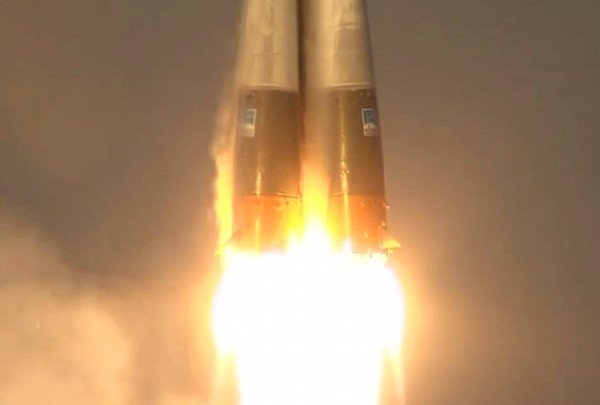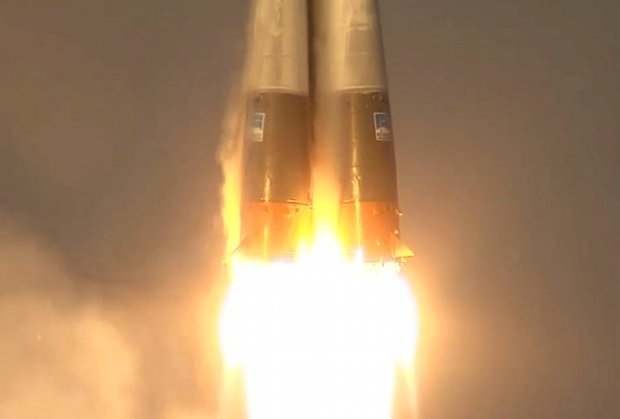The Soyuz space capsule has arrived to the International Space Station (ISS).
British astronaut Tim Peake and fellow crew members Russian Yuri Malenchenko and American Tim Kopra, docked with the ISS high above the Earth.
The crew controlled the approach manually, after complications with the usual automatic docking procedure.
Tim Peake is making history as the first official UK astronaut.
He was waved off by his wife and two sons at the Baikonur Cosmodrome in Kazakhstan earlier on the day.
The launch was from the same place where Yuri Gagarin became the first human in space in 1961.
There were no reported problems during the blast-off.
However, docking with the space station – which is regarded as one of the most difficult stages of the journey – did not go entirely to plan when the crew had to steer the spacecraft in manually.
The docking happened about 10 minutes after its scheduled time of 17:24 GMT.
It takes four orbits of Earth and about six hours to reach the ISS.
Having arrived safely, the team will have to wait around two hours before they can leave the capsule to allow safety checks and for the air pressure to be equalized.
In the meantime, the new arrivals will carry out routine checks for leaks.
ESA said the crew reported they were fine and were starting to shut down the spacecraft’s systems as they were no longer needed.
The Soyuz capsule will remain attached to serve as an escape vehicle if the ISS has to be evacuated in an emergency.
Once on board the ISS, the crew will work, sleep and exercise in a dozen modules, together about the same volume as two Boeing 747s.
The three crew members will join the existing taskforce on board the ISS – NASA astronaut Scott Kelly and Russian cosmonauts Mikhail Kornienko and Sergey Volkov.
Scott Kelly and Mikhail Kornienko are approaching the ninth month of their one-year ISS mission.
A maximum of 10 crew members can live on the station.
Tim Peake will spend six months on board the ISS where he will conduct scientific experiments and carry out educational projects designed to attract young people into science.
